Now You're Cookin'! More Fruits and Vegetables (FN696, Reviewed August 2021)
Availability: Web only
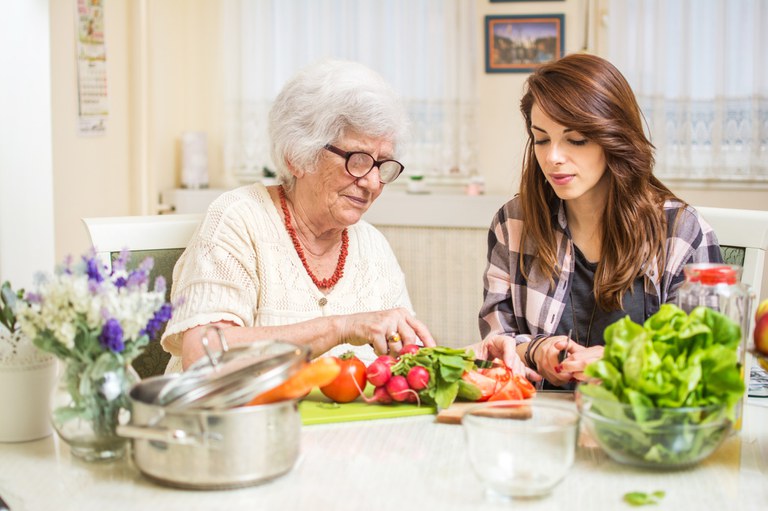
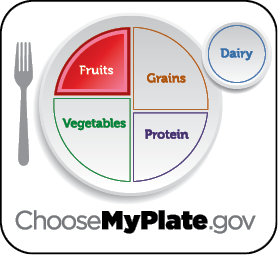
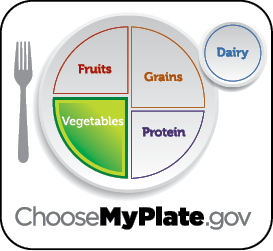
Aim for MyPlate Recommendations
MyPlate recommendations for fruits and vegetables are in cups. The amounts of fruits and vegetables recommended for people vary, depending on their age, gender and activity level. For example, many adults need about 2,000 calories per day to meet their energy needs. Their MyPlate plan would include 2 cups of fruit and 2½ cups of vegetables. Children ages 2 to 6 need 1½ to 2 cups of vegetables and about 1½ cups of fruit daily. Visit Choose my plate or contact your local Extension Service office to learn more about your family’s needs.
Canned, fresh and frozen fruits and vegetables all count toward your goal. Vegetables are important sources of many nutrients, including potassium, dietary fiber, folate (folic acid), vitamin A, vitamin E and vitamin C. Fruits contain nutrients, such as potassium, dietary fiber, vitamin C and folate (folic acid).
Focus on Fruits
A cup of fruit equals
- 1 cup cut-up fruit
- 1 cup 100 percent fruit juice
- ½ cup dried fruit
- 1 small apple (2.5 inches in diameter)
- 1 large banana
- 1 large orange (3 inches in diameter)
- 8 strawberries
Vary Your Veggies
A cup of vegetables equals
- 1 cup raw or cooked vegetables
- 1 cup vegetable juice
- 2 cups raw, leafy greens
- 1 cup cooked dry edible beans
- 12 baby carrots
- 1 large whole tomato (3 inches in diameter)
Safety Tips
At the grocery store, keep fruits and vegetables separate from raw meat, poultry and seafood in your shopping cart or basket. Wash fruits and vegetables thoroughly before preparing and eating them. Use clean, running water and a vegetable brush if needed.
Family Fitness Tip
On family bike rides or hikes, bring fresh fruit, such as grapes and apples, as a snack to eat on the go. They’re high in water, too, so they help quench your thirst.
My Family Meal Goal to Include More Fruits and Vegetables
Fitting in Vegetables and Fruits
Most children enjoy the sweet taste of fruits, but getting children to eat enough vegetables can be a challenge for parents/caregivers. Be patient. Sometimes getting a child to try a new food takes 10 or more tries! Try these tips:
- Encourage children to help choose fruits and vegetables at the grocery store.
- Add shredded carrots to pasta sauce, lasagna or meatloaf.
- Add extra vegetables to casseroles and soups.
- Have a bowl of fruit, such as apples or bananas, on the countertop.
- Serve raw, crunchy vegetables with low-fat dip as a snack.
- Try vegetable kabobs on the grill.
- Have fruit smoothies as a family snack.
- Serve fruit for dessert.
- If possible, have children help grow a vegetable garden or a container garden. They are likely to eat vegetables they helped grow.
Saving Money on Fruits and Vegetables
Prices of fruits and vegetables vary depending on the time of year and where you live, among other things. Compare prices of fresh, frozen and canned vegetables for the best buy. Sometimes fresh fruits and vegetables are a better deal.
According to the USDA, some of the least expensive vegetables are cabbage, potatoes, regular (not baby) carrots, canned green beans, onions, bell peppers and lettuce. Some of the least expensive fruits are apples, raisins, bananas and grapefruit.
Recipes
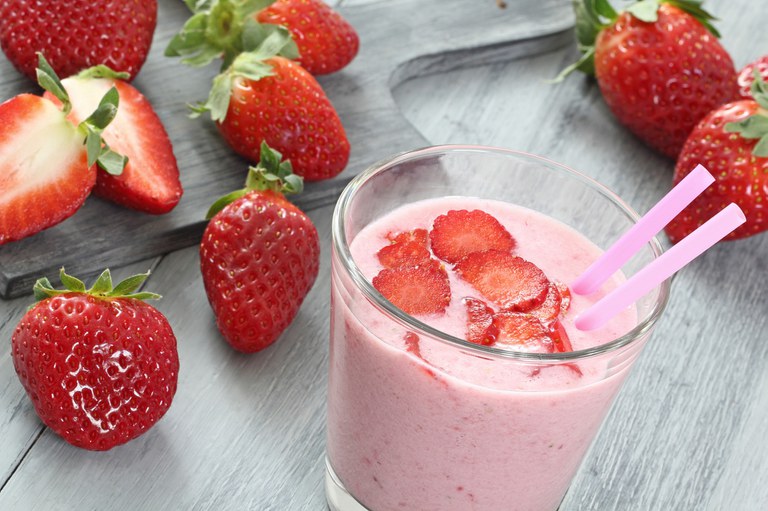
iStock.com
Strawberry Banana Smoothie
3 6-ounce containers low-fat or nonfat vanilla or strawberry yogurt
1 10-ounce package frozen, sweetened strawberries
1 medium banana, sliced
¼ c. low-fat or nonfat milk
Place all ingredients in a blender. Cover and blend on high speed until smooth (about 30 seconds). Pour in glasses and serve immediately.
Makes four servings. Each serving has 180 calories, 2 g fat, 7 g protein, 34 g carbohydrate, 2 g fiber and 100 mg sodium.
Snack Idea: Strawberry Banana Smoothie and graham crackers
Veggies in Cheese Sauce
1 16-ounce package frozen vegetables of choice (such as peas and carrots)
2 Tbsp. margarine or butter
2 Tbsp. flour
1 c. low-fat milk
¼ tsp. salt
½ c. cheddar cheese, grated
Cook vegetables as directed on package. Melt the margarine or butter in a saucepan. Add flour until blended and bubbly. Slowly add the milk and cook until thickened. Stir in the cheese and heat until the cheese melts. Drain vegetables and add to cheese sauce.
Makes six servings (½ cup each). Each serving has 180 calories, 8 g fat, 6 g protein, 16 g carbohydrate, 0 g fiber and 230 mg sodium.
Menu Idea: Meatloaf, baked potatoes, Veggies in Cheese Sauce, fruit cocktail and low-fat milk
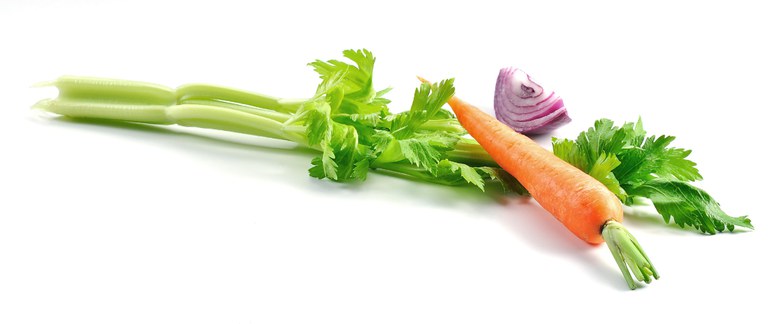
iStock.com
30-Minute Minestrone Soup
2 medium carrots, chopped
1 c. chopped cabbage
1 celery rib, thinly sliced
1 small onion, chopped
1 garlic clove, minced
2 tsp. olive oil (or vegetable oil)
3 c. water
1 can (14.5 ounces) stewed or diced tomatoes, undrained
3 beef bouillon cubes
1 c. cooked elbow macaroni
¼ tsp. pepper
Cook macaroni. In a 3-quart saucepan, sauté carrots, cabbage, celery, onion and garlic in oil for five minutes. Add water, tomatoes and bouillon; bring to a boil. Reduce heat. Simmer uncovered for 20 to 25 minutes or until vegetables are tender. Stir in macaroni and pepper; heat through.
Makes five servings. Each serving has 100 calories, 2.5 g fat, 3 g protein, 18 g carbohydrate, 2 g fiber and 740 mg sodium.
Recipe source: Purdue University Extension Service
Quick Tip
To save preparation time later, chop vegetables during the previous meal preparation.
Eat Smart. Play Hard. Together
For more information about food safety and nutrition, contact your county office of NDSU Extension.
Visit the NDSU Extension website.
For more information about healthful eating for the entire family.

